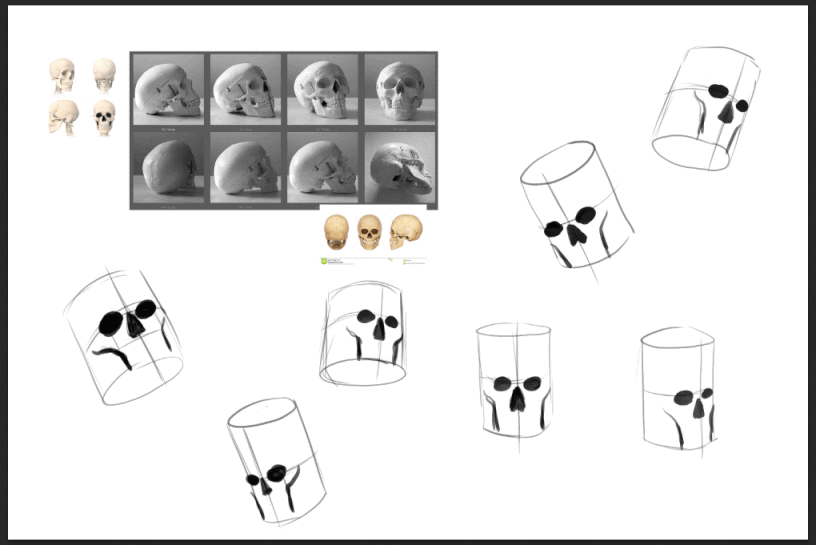
As your party steps inside, a figure in a booth at the back of the tavern catches your eye. He seems to be scribbling furiously in his book. It has a dark leather cover, and on the front, a small golden bird holding a brush. You approach, curious, to find him drawing the faces of the patrons around you. Noticing that you carry drawing weapons that he’s all too familiar with, he offers to show you how to draw a head and paint skin tones as he does.
I’m a big fan of Ahmed Aldoori and never tire of watching his painting process videos. He’s a concept artist, illustrator, and teacher that has worked with clients such as Games Workshop (Warhammer), ArenaNet (Guild Wars 2), and Applibot.
Ahmed just launched his first complete online course titled Med’s Map: Your Guide to Digital Painting Mastery. View all the details of that here.
He recently ran a discount over on his Gumroad store and I decided to grab a couple of things. This Heads and Skin Tones lesson is one I’ve looked forward to getting stuck in to, seeing as I’m doing a few portraits these days. They tend to take longer for me to figure out than I care to admit.
If you’re also trying to figure out how to draw a head and get believable skin tones, then you might be interested in this lesson as well.
Whats in the lesson package:
– Head construction lesson video with voice over (20mins)
– Painting skin tones lesson video with voice over (41mins)
– Timelapse video of his Dim painting with voice over
– Real-time video of painting Dim
– Skull reference JPEG
It also includes the PSD for the Dim painting so you can see different moments of the process.

Doing the lesson
The first video starts with with looking at the shape of the skull: the planes and shapes that it’s made up of. You’ll reference this when it comes to lighting your faces later.
The basic skull shapes, specifically the cavities for the jaw, eyes and nose, become the template for the next step. Then that gets applied to a bunch of cylinders all facing different directions. From there you start to flesh things out, and can play with proportions. It’s easier to really exaggerate certain features having a better understanding of that basic skull shape.
It’s not necessary, but you might want to keep general head proportion diagram nearby in case you need to check proportions and see how different elements of the face line up.
The next video focuses on painting the skin tones. There are 5 different approaches Ahmed shares here, building up from a base color. There’s attention to areas that have more blood flow, color temperature, and having the RGB colors represented. He also shows how to avoid your colors getting muddy.
Below is my start of the exercise of drawing heads with these approaches and I’ve got a lot more to do.

Next?
If you grabbed the lesson and did the exercises, then you might be wondering what to do next. Maybe you want to give the #meds50heads challenge to try to build more confidence with how to draw a head. He’s got a Pinterest board of faces for the challenge that you can use as reference if you want to.
If you enjoy Ahmed’s work and want to learn more, check out his Character portraits lesson with real-time process videos on Artstation. You can find more of his work on Instagram and his website.
For more learning resources and tutorials, pop over to the Learning section of the site. If you are a total beginner looking to get into digital art, then my Beginners post might be helpful to get you started.